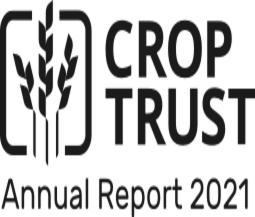Breathing New Life into the Global Crop Conservation Strategies
Since 2019, the Crop Trust has been working with experts and institutions worldwide to develop or revise 15 strategies that guide the global conservation of genetic resources of such important crops as potato, sunflower and groundnut.
These strategies provide details about existing ex situ collections of crop diversity, including the status of their conservation, their availability, accessibility and distribution, and provide concrete recommendations for how to improve and secure the crops’ long-term conservation and use.
Information and recommendations from the strategies are used by institutions and policymakers to help ensure that these crops and their genetic relatives are secured in a cost-effective and sustainable manner for the long-term future.
In 2021, three new strategies and one updated strategy were published, and drafts of four others were completed. Data analysis was underway for several more.
At A Glance
The global crop conservation strategies bring together the latest information from experts and institutions worldwide to plan and prioritize actions in support of the long-term conservation and availability of crop diversity. The Crop Trust is facilitating the update of five existing global crop conservation strategies and the development of 10 new strategies for this 3-year project that began in July 2019.
- HIGHLIGHTS FROM 2021: Three new strategies published (cucurbits, temperate forages, vanilla); one updated strategy published (yam); drafts completed for four more strategies (eggplant, groundnut, millets and sorghum); and data analysis underway for the Brassica (e.g., cabbages, kale), Citrus and Vigna (e.g., cowpea) crop strategies.
- FULL PROJECT TITLE: Breathing New Life into the Global Crop Conservation Strategies: Providing an Evidence Base for the Global System of Ex situ Conservation of Crop Diversity
- FUNDING PARTNER: German Federal Ministry of Food and Agriculture (BMEL)
Foundations of the Global Conservation System
Global crop conservation strategies are a key tool in the Crop Trust’s efforts to ensure the long-term conservation and availability of plant genetic resources for food and agriculture. These take stock of where different crop communities stand in terms of conserving and making accessible genetic diversity. And they recognize that the specific actions needed to underpin the conservation of different crops may differ significantly, depending on the biology of the crop, on the representativeness of current collections, and on how these are managed.
Something Old, Something New
Starting in 2019, thanks to a grant from the German Federal Ministry of Food and Agriculture (BMEL), the Trust and its partners have been working to update five existing global crop conservation strategies—potato, yams, Vigna, millets and sorghum—and to develop 10 new ones—for Brassica, Citrus, cucurbits, eggplant, groundnut, pea, peppers, sunflower, temperate forages and vanilla.
Three New Strategies Published
Three of the new strategies were published in 2021—cucurbits, temperate forages and vanilla—together with the update of the yam strategy.
Surveys and Data Analysis Underway
Surveys to gather information on existing collections are in process for the Brassica (e.g., cabbages, kale), Citrus and Vigna (pea) crop strategies. These are being supported by data compiled from a variety of sources, including Genesys, FAO’s World Information and the Early Warning System on Plant Genetic Resources for Food and Agriculture (WIEWS) and gap analyses of CGIAR collections conducted by the Genebank Platform.

"The strategies synthesize the current status of conservation for a crop gene pool and identify the highest priority activities required to ensure the long-term survival and continued use of these plant genetic resources.”
Related News and Resources
- Protecting Your Halloween Pumpkin from Climate Change, blog, October 2021
- Protecting Vanilla, One of Our Favorite Flavors, blog, December 2021
- Global Strategy for the Conservation and Use of Vanilla Genetic Resources (PDF)
- A Global Conservation Strategy For Crops In The Cucurbitaceae Family (PDF)
- Global Strategy for the Conservation and Use of Yam Genetic Resources (PDF)
- Global Strategy for the Ex Situ Conservation of Temperate Forages (PDF)

